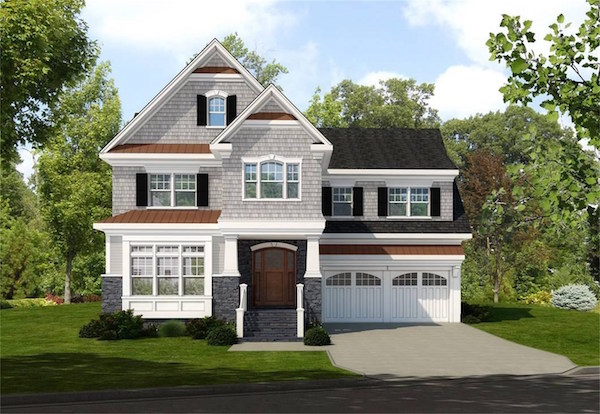Oversized Houses on Undersized Lots
- Tuesday, 19 December 2017 07:50
- Last Updated: Wednesday, 20 December 2017 13:59
- Published: Tuesday, 19 December 2017 07:50
- Joanne Wallenstein
- Hits: 9583
 (This article was first published in 2014 - but there have been no changes to Village Code since then. Given the debate about preservation and new construction, we thought it was worth a second look.) During the debate over the use of gravel to extend lot coverage on home sites, many asked, "If people are concerned about the size of new and renovated homes, why not change the laws that regulate the size of homes, rather than the use of gravel?"
(This article was first published in 2014 - but there have been no changes to Village Code since then. Given the debate about preservation and new construction, we thought it was worth a second look.) During the debate over the use of gravel to extend lot coverage on home sites, many asked, "If people are concerned about the size of new and renovated homes, why not change the laws that regulate the size of homes, rather than the use of gravel?"
We took a look at the Village's existing floor area ratio (FAR) regulations that specify the maximum allowable size of homes on various size lots in the Village. The good news is those rules look perfectly generous and reasonable.
For instance, on a home on 1/3 acre, or about 14,500 square feet, the maximum allowable home size is about 4,300 square feet. Sounds adequate to me, but apparently builders are finding ways to build much larger homes on these lots.
For instance, a new home under construction next to the Greenacres School at 42 Huntington Avenue is advertised as a 6,115 square foot home on a lot of .31 acres.
How can the builder construct a home that is almost 50% larger than the permitted 4,300 square feet, and taller than all the neighboring homes?
The answer lies in the exemptions to the floor area ratio (FAR) requirements that are outlined in section 310-103 of Village code. Local builders and architects have grown adept at using these exemptions to build homes that are far larger than the ones the trustees originally envisioned when they enacted this code in 2003 and 2008.
The exemptions allow some full basements, dormered attics, garages and the space above them all to be exempt from the maximum floor area rules.
For instance, many of the new homes have front facing garages with rooms above the garage. In this case both the garage and the room above it are exempt. If a typical two-car garage is 20 x 20 feet, the space above it could be 400 square feet, and that space is exempt from the FAR.
For basements, if the foundation wall of the basement is not more than 3 feet above grade on the front of the house, the entire basement does not count in the calculation. That means that if a house is on a sloped property, it may have a full finished basement with full-length windows on the side and back of the house.
The area under dormered roofs on the third floor of a house does not count either – if builders extend the dormers for less than 1/3 of the linear footage of the front, and set the dormers beyond 5-feet of the sidewalls on the back. This allows third floor spaces that add considerable square footage to a house.
And why do the new houses appear to tower over their neighbors ... Because they actually do extend beyond the 35-foot height limit. With a peaked roof the house can be taller as the building height can be calculated to the mid-point rather than the peak of the roof. That's why so many of the new homes feature a peak or two like the one shown here.
Therefore, from what I see, the Village does not need to amend the maximum allowable size of a house. Instead they should take a second look at the exemptions. By tightening those exemptions, the Village can require that appropriately-sized homes be built on residential lots. Or, as one reader suggested, simply by counting all finished interiors spaces in the Floor Area Ratio calculation, home sizes could be reduced.
Two other changes could also be considered if Trustees are serious about preserving open space and reducing the appearance of bulk.
Some of the newer bulkier homes are built closer to the street than the teardowns they replace. Since the new homes are also taller and wider, by moving them closer to the curb, they appear to loom over their neighbors and don't conform to the site line of the existing homes. Perhaps laws can be changed to require that the front setback of a replacement home is consistent with the footprint of the original home.
Subdivisions of Village lots continue to be a lucrative way for developers and property owners to add homes to Scarsdale's already densely populated streets. Once a lot is subdivided, two new homes can be built where just one originally stood. This often results in crowding, destruction of trees, new curb cuts, and less breathing space for neighbors. In the past few weeks, the land use boards have considered and approved subdivisions at 21 Rodney Way, 12 Stonewall Lane and 2A Normandy Lane.
Do you have ideas for controlling development and land use in Scarsdale? Share them in the comments section below.














